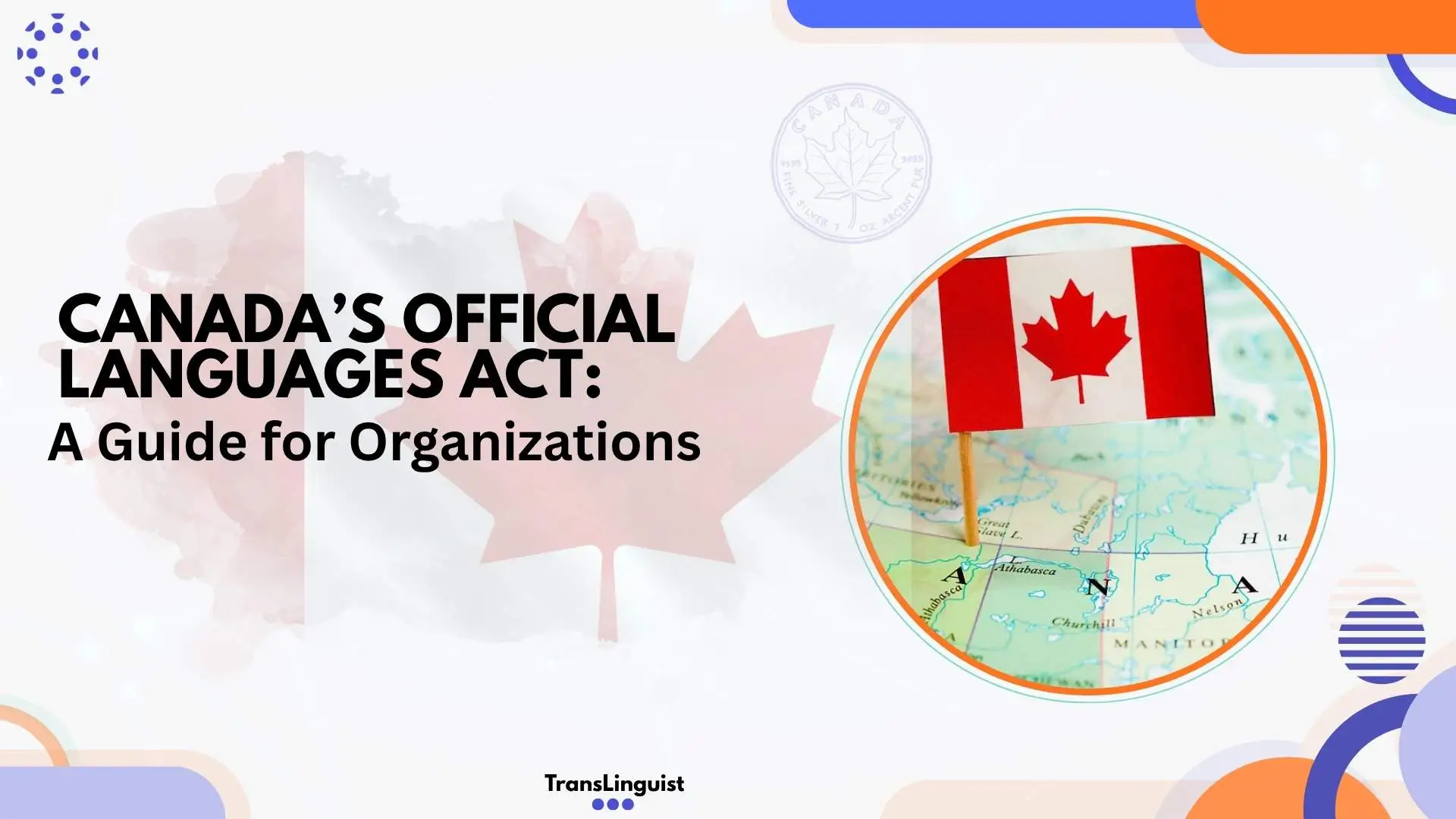If you operate in or with Canada, Canada’s Official Languages aren’t a branding preference; they are a legal framework. The Official Languages Act (OLA) delineates federal obligations for communication and service delivery in English and French and informs procurement, events, and digital publishing. Familiarity with Canada’s official languages regime enables proactive planning for bilingual websites, meetings, signage, and customer support. Operationally, it covers policies, standardized templates, vendor selection, and performance metrics; this guide converts statutory requirements into actionable procedures.
The essentials: what the Act covers (in plain language)
The OLA gives English and French equal status in the federal sphere. That means Parliament, federal courts, and federal institutions must operate in both languages, with specific obligations for communications with and services to the public (Part IV). In locations where demand is significant or the nature of the office justifies it, services must be available in both official languages. These rules are further detailed in the Official Languages (Communications with and Services to the Public) Regulations.
A note on modernization
Canada’s Bill C-13 (2023) refreshed the Official Languages Act, putting extra weight behind French and keeping bilingual rights in place. If you depend on federal grants, contracts, or partnerships, keep an eye on this, as it changes what programs ask for and how they’re reviewed.
Who must comply and when it reaches you
- Federal institutions and Crown corporations are bound directly by the OLA.
- Vendors and partners touch the OLA indirectly through RFPs, contribution agreements, or service standards (e.g., bilingual digital content, bilingual events for public outreach). Guidance from the Office of the Commissioner of Official Languages confirms expectations for federal websites, signage, and public-facing services.
Part IV in action: “significant demand” and “nature of the office”
The Regulations spell out how “significant demand” is calculated (for example, thresholds for offices abroad and within Canada) and when the nature of the office (e.g., health, safety, security) triggers bilingual service regardless of demand. If you plan a public event on behalf of a federal body or build a service point you should assume bilingual communications are in scope.
Practical checklist for compliant planning
Use this five-step path to bake compliance into your workflow:
- Define audiences and touchpoints: List every public contact point, web pages, forms, kiosks, call flows, social posts, press materials, and events. Tie each to a responsible owner.
- Set bilingual standards: Lock your source of truth: terminology (EN/FR), style, date/number formats, and accessibility rules.
- Pick coverage by scenario: For federal-facing or public-facing content, plan full bilingual output; for internal drafts, plan bilingual outputs, not necessarily bilingual work in progress.
- Operationalize events: For public meetings or consultations related to federal programs, plan bilingual agendas, slides, live interpreting or simultaneous interpreting, bilingual Q&As.
- Measure outcomes: Monitor turnaround, error/rework, and service satisfaction for each language. Think of these metrics as justification for the resources.
Content, design, and product implications
- Web & apps: Federal web content and forms should be fully available in English and French, with equivalent functionality and equal prominence. Language toggles must be obvious; redirects should respect user choice.
- Documents & signage: If a program has public-facing forms or notices, create bilingual masters; don’t layer translations after design is locked.
- Customer support & events: If you run a help desk or host a public session for a federal client, plan bilingual scripts, routing, and interpretation. (The general “bilingual meetings” guidance reinforced in your reference is consistent with this approach.)
Mid-project realities: avoiding common pitfalls
- Late bilingualization: Retro-translating at the end breaks layouts, adds cost, and risks inconsistencies across channels. Build bilingual design tokens from the start.
- Unequal visibility: English prominent, French buried (or vice-versa) is a frequent complaint. Mirror hierarchy, imagery, and calls to action in both languages.
- Unclear ownership: Name a bilingual content owner, interpreter coordinator, and QA reviewer for every release or event.
Brief history: why this framework is stable (and evolving)
Originating in 1969 with a major 1988 revision, the OLA is rooted in the Royal Commission on Bilingualism and Biculturalism. Contemporary measures, including the 2019 Regulations update and Bill C-13, seek to maintain bilingual services and bolster French where it is at risk. That’s why your plans should be flexible, measurable, and ready for incremental change.
Where TransLinguist fits
- Translation & Transcreation: We produce parallel English–French content with aligned terminology and layout parity critical for programs tied to Canada’s Official Languages.
- Remote & On-Site Interpreting: Live bilingual coverage for public briefings, consultations, and hybrid events, plus interpreter pre-briefs and post-event transcripts where policy allows.
- Live Captions & Subtitles: Accessibility-first captions in both languages boost understanding and leave you with a searchable archive.
This unified workflow means your English and French assets tell the same story on the same day without last-minute fixes.
Conclusion
For organizations that touch federal audiences, Canada’s Official Languages are operational guardrails, not a box to tick. Start with the legal core Part IV and the Regulations, then translate those rules into content, events, and support processes your teams can run every week. When you treat Canada’s Official Languages as part of product and service design, you cut rework, protect compliance, and make public communications genuinely inclusive.
Ready to ship bilingual content and events that stand up to scrutiny? Talk to TransLinguist about translation, interpreting, captions, and bilingual QA tuned to Canada’s Official Languages across your programs.
FAQs
Does the OLA apply to private companies?
Directly, it binds federal institutions and Crown corporations. Private vendors feel it through contract terms and expectations (web, events, signage) when working with federal partners.
What triggers bilingual service in person or online?
Part IV plus the Regulations: significant demand or the nature of the office (e.g., health/safety) requires service in both languages at designated points.
Is there a simple way to track compliance?
Maintain a bilingual checklist per release/event: language parity in assets, visible toggles, interpreter booking, captioning, and QA sign-off. Tie it to metrics like rework rate and CSAT.



